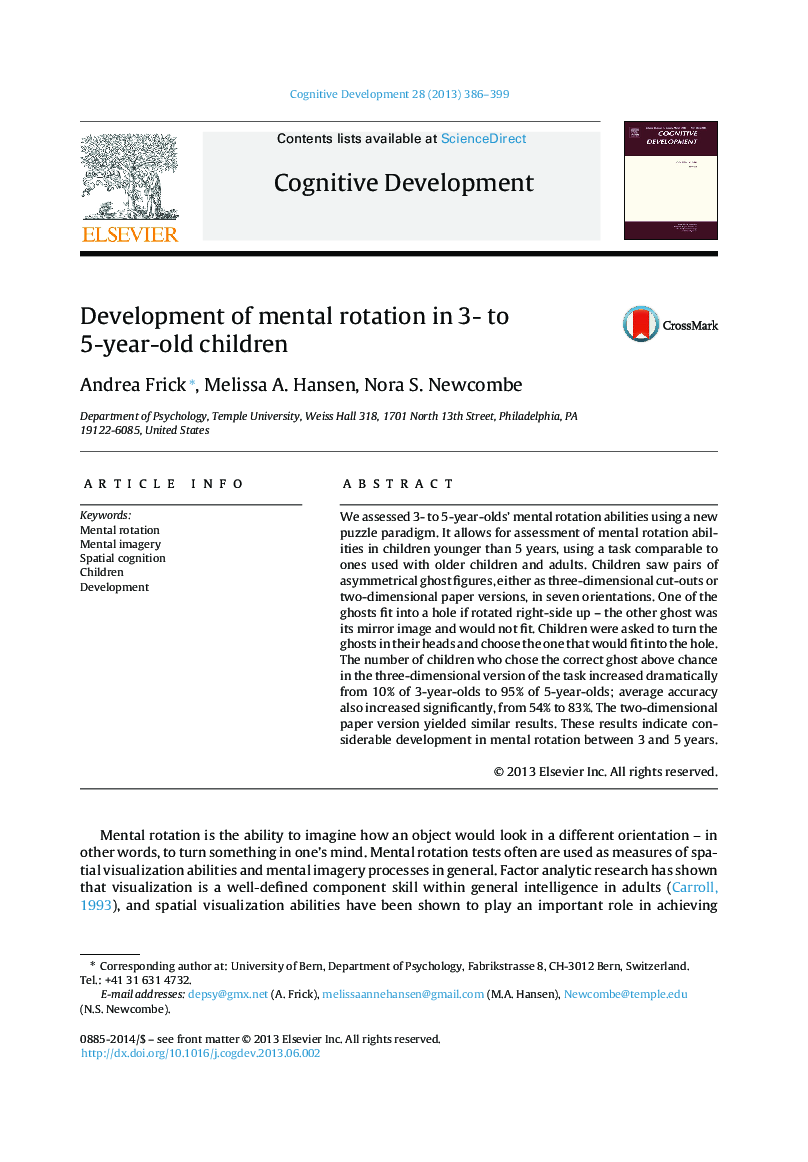| Article ID | Journal | Published Year | Pages | File Type |
|---|---|---|---|---|
| 916543 | Cognitive Development | 2013 | 14 Pages |
•We assessed 3- to 5-year-olds’ mental rotation abilities using a puzzle paradigm.•Pairs of asymmetrical ghost figures were presented in seven different orientations.•Children were asked to pick the ghost that would fit into a hole.•Results indicate considerable development between 3 and 5 years of age.•This new paradigm allows for assessing mental rotation abilities below age 5.
We assessed 3- to 5-year-olds’ mental rotation abilities using a new puzzle paradigm. It allows for assessment of mental rotation abilities in children younger than 5 years, using a task comparable to ones used with older children and adults. Children saw pairs of asymmetrical ghost figures, either as three-dimensional cut-outs or two-dimensional paper versions, in seven orientations. One of the ghosts fit into a hole if rotated right-side up – the other ghost was its mirror image and would not fit. Children were asked to turn the ghosts in their heads and choose the one that would fit into the hole. The number of children who chose the correct ghost above chance in the three-dimensional version of the task increased dramatically from 10% of 3-year-olds to 95% of 5-year-olds; average accuracy also increased significantly, from 54% to 83%. The two-dimensional paper version yielded similar results. These results indicate considerable development in mental rotation between 3 and 5 years.
